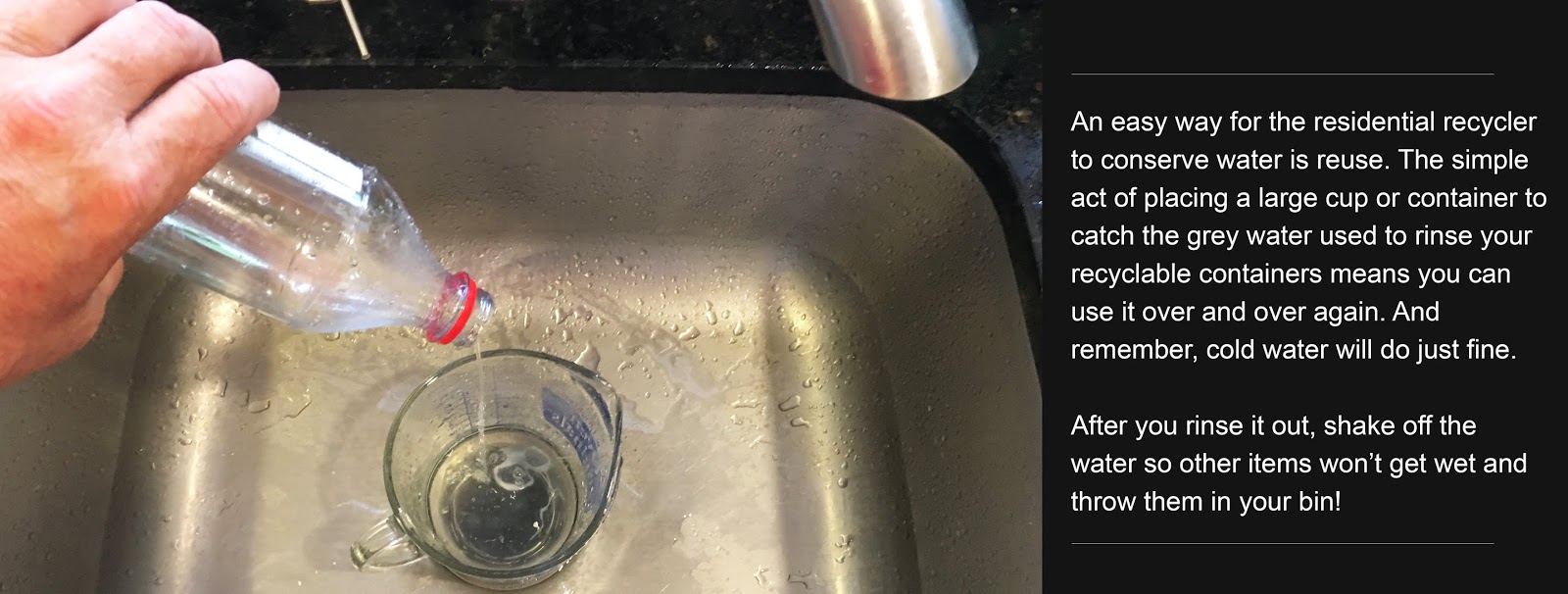Whether you live in an urban downtown and put all your recyclables in one blue bin or in a rural town and you self-haul your garbage and recyclables to a transfer station there is one universal truth: the recyclables need to be empty, clean, and dry in order to preserve their value as a recycled commodity. Based on this, the Washington Department of Ecology has launched a three-week campaign to inform Washingtonians of this truth.
Go to Ecology's Recycle Right webpage.
Recicla bien en Espanol.
In addition to informing millions of people about the importance of recycled items being empty, clean, and dry, the campaign has also sparked conversations about how to properly recycle. Chief among them: How empty is empty enough? How clean is clean enough? And, how dry is dry enough?
Washington residents are passionate about doing their part for the planet, and recycling is one of the easiest things we can do to make a difference. There are a few things to keep in mind before you toss that bottle or can into your recycling bin.
At its heart, recycling is a manufacturing process. When we toss materials into the bin, these are resources such as oil, aluminum, and steel that we don’t have to extract from the Earth. In order to make a quality product we need quality input materials.
If you recycle by putting all of your metal, plastic, and paper into a single bin, you have commingled or mixed recycling. In mixed recycling all of the materials are sorted at a material recovery facility (MRF – rhymes with smurf). At a MRF all of the materials are mixed with other materials. If something is half-full of food or water, it will spill onto the other items. This can ruin the quality of the other materials in the bin such as cardboard and paper. The wet and food contaminated paper is then destined for a very expensive trip to the landfill instead of a new life.
By making sure items are empty, clean, and dry you are also preventing odors, mold, and pests such as insects, rats, and raccoons. These critters are attracted to the half a can of rotting tuna or the sticky sweet jar of jelly.
Recyclables don’t have to be dishwasher clean. Empty them out, give it a quick rinse, shake off the water and voila! You are good to go!
Use a spoon, spatula or paper towel to scrape food waste into your compost bucket or trash. Then save the container until you are done with the dishes and use your dirty dishwater. This way you will be using water that would be going down the drain anyway. A quick swish or rinse with cold water will usually do the trick. After you rinse it out, shake off the water so other items won’t get wet and throw them in your bin!
How dry is dry enough?
A few droplets of water are ok but a partially full water or soda bottle is not. Similarly, keep the lid of your curbside recycling cart closed to keep out the rain and snow.
What about water conservation? Aren't we in a drought?
When in doubt, use your best judgment: a high quality, clean recycling stream is important, but so is water conservation. A spatula or spoon will usually do the trick to remove most of the contents. A quick rinse can do the rest.
Is this new? We didn't used to have to wash our recyclables?
Recyclables have always been feedstock into the manufacturing process. For the last two decades, many of our recyclables have been sent overseas where the emphasis has been on the quantity of materials instead of the quality of the materials. Most of the overseas markets have closed. Domestic markets are limited and demand a higher quality of material.
The economics of the markets have also shifted. Some materials used to be worth a lot of money. Recycling has gotten more expensive. Making sure only high quality materials are collected can help reduce the overall costs on utility bills.
Have you checked your local accepted recyclable materials list?
Knowing what you can and cannot recycle is half the battle.
Have you noticed that what you can recycle at your house might be different than what you can recycle at your friend’s house in a different city or county? Cities and counties accept different materials based on a combination of access to different sorting facilities, markets, and willingness of citizens to pay for more comprehensive recycling services.
Now more than ever it is important to make sure that what you put in the bin is what is on the local recyclable materials list. Just because it is accepted in Seattle doesn’t mean it is collected in Tacoma, Olympia, or Spokane. If your item is not on the list, it can’t be processed, doesn’t have a market, and is destined for the landfill.
Is it worth recycling?
Yes! Recycling save resources. Aluminum cans have high value and prevent more resource extraction. Steel cans, plastic bottles, and jugs and cardboard are also top-tier materials. Glass is more challenging because silica is cheap, sorting is challenging, markets are sparse, and the economic margins are thin. This is why some cities and counties don’t collect it. Similar dynamics play out for materials such as cartons and other types of plastic packaging.


